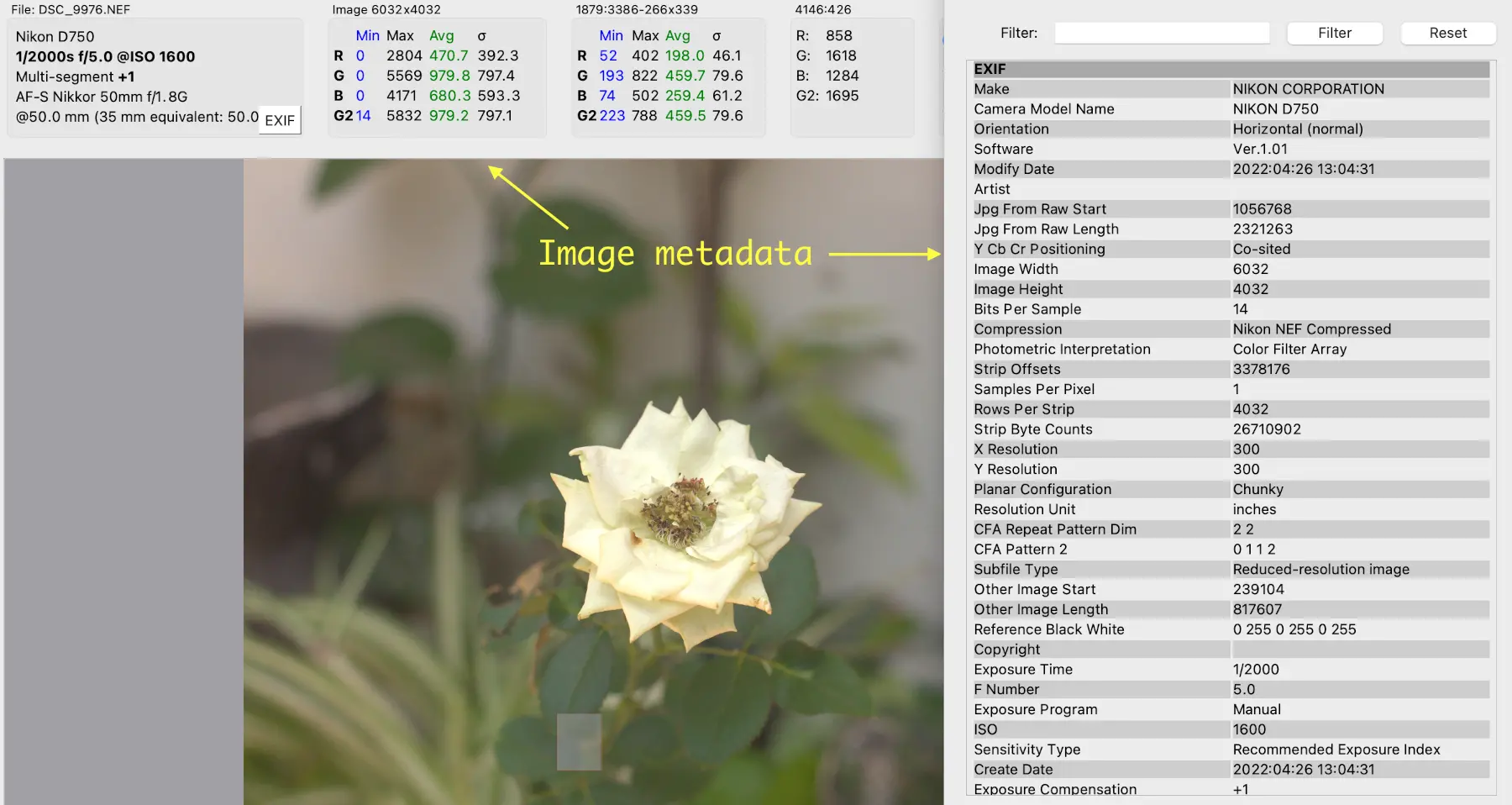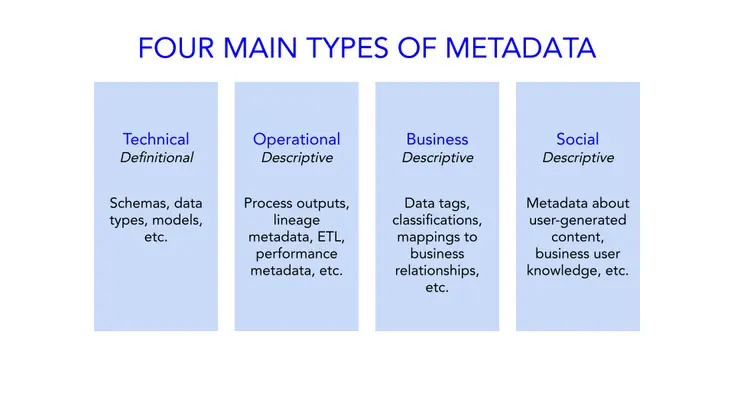Top 6 Metadata Management Best Practices (Guide for 2024)

Share this article
Top 6 metadata management best practices #
Here are six metadata management best practices that you should follow in 2024:
- Outline your metadata management goals and KPIs
- Build a metadata management team
- Adopt metadata management ISO standards
- Leverage AI/ML to activate metadata
- Have a plan for the various types of metadata
- Bring it all together with a modern metadata management tool
When it comes to metadata management best practices, enterprises look to streamline, augment, and automate data pipelines as much as possible.
Between compliance restrictions, disparate data sources, and the sheer growth of data in general, data leaders struggle to manage the massive amounts of metadata required to make sense of the organization’s data lakes.
To help, we’ve outlined the six practical metadata management best practices that an organization can implement to streamline metadata management workflows.
Table of contents #
- Top 6 metadata management best practices
- What is metadata?
- What are the various types of metadata?
- What is metadata management?
- What does metadata management entail?
- Top 6 enterprise metadata management best practices
- 1. Outline your metadata management goals and KPIs
- 2. Build a metadata management team
- 3. Adopt metadata management standards
- 4. Leverage AI/ML to activate metadata
- 5. Have the plan to accommodate all kinds of metadata
- 6. Bring it all together with a modern metadata management tool
- Getting metadata management right pays dividends
- Metadata Management best practices: Related reads
But before that, let’s discuss metadata management and its benefits.
What is metadata? #

Metadata of a image file - Source: Atlan
Metadata is technical and descriptive information about data, adding meaning and context to an organization’s data assets and sources.
Think of a YouTube video as a good example of metadata. By itself, the video can’t tell you anything about its content. You have to hit the play button to know more. That’s where metadata comes in handy, as:
- Video title
- Video description
- Video length
- Video size
- Upload date
- Video tags to categorize the video
Each metadata element identifies and describes the data — in this case, the YouTube video. When these pieces of metadata come together, just a glance at the metadata can give you a broad set of contextual information about the video’s contents and purpose.
What are the various types of metadata? #
In an organization’s data ecosystem, metadata can be categorized into four main groups:
- Technical Metadata: Includes schemas and data types
- Operational Metadata: Includes ETL, data lineage, and performance metadata
- Business Metadata: Includes data tags and mappings to business relationships
- Social Metadata: Includes metadata about user-generated social content

Four types of metadata - Source: Atlan
However, metadata also exists in a few other forms, such as:
- Provenance metadata
- Administrative metadata
- Structural metadata
- Process metadata
- Rights Management metadata
- Preservation metadata
To learn more about these different forms of metadata, check out Metadata management 101: What it is? And why is it important in the modern data stack?
What is metadata management? #
It isn’t easy to garner business insights from large sets of raw, unstructured data ingested from various sources. Particularly when data is siloed and not cataloged as proper metadata.
Metadata management is the science of managing the metadata about data.
What does metadata management entail? #
Getting started with metadata management requires setting a comprehensive goal and planning a solid strategy. Let’s explore these two concepts further.
What is the goal of metadata management? #
The goal of metadata management is to allow easy access to an organization’s various data sources, along with the proper context. This requires:
- Defining clear metadata management objectives
- Setting up a practical metadata management strategy
- Building effective data teams that can maintain standardized metadata
What is a metadata management strategy? #
A metadata management strategy enables companies to manage the metadata associated with their data efficiently.
Any organization dealing with large volumes of data coming from disparate sources must work on developing a proper strategy to handle all the metadata. An effective metadata management strategy makes data more discoverable and searchable for data teams across an organization.
A strong metadata management strategy answers the “who, what, when, where, why, and how” for every available data asset. It answers the following questions for data users:
- Who created this data?
- What is the business relevance of this data?
- What types of metadata are available for this asset?
- What is the lineage of this data?
- When was this data created?
- Where is this data stored?
- Why is it necessary to store this data?
- How is this data formatted?
Now let’s get back to metadata management.
How do you implement metadata management? #
Once the goal and strategy for metadata management have been set, the next step is implementation.
As businesses collect more data, there is a need for a scalable solution to manage the data based on its size requirements. As the volume of data grows, organizations must process data from all internal and external sources rapidly so that it’s relevant and useful.
Businesses are increasingly employing metadata management software to help make sense out of their data bulk. The right platform can make a world of difference.
Metadata Management Best practices in a Data Catalog — Metadata Capture Live Demo on Atlan
However, before you commit to a metadata management tool, here are six best practices to bear in mind.
Top 6 enterprise metadata management best practices #
There are six enterprise metadata management best practices that you should follow:
- Outline your metadata management goals and KPIs
- Build a metadata management team
- Adopt metadata management ISO standards
- Leverage AI/ML to activate metadata
- Have a plan for the various types of metadata
- Bring it all together with a modern metadata management tool
Let’s discuss each metadata management best practice further.
1. Outline your metadata management goals and KPIs #
To create an effective metadata management strategy that ensures a successful data journey, you must define goals and KPIs aligned with your organization’s vision.
While defining metadata management objectives, make sure that they’re realistic. Examples include:
- Finding a scalable metadata management solution that can catalog your organization’s ever-increasing data sources
- Improving data democratization to build an inclusive and collaborative environment for all data teams
- Efficient use of metadata management workloads to improve productivity and enable business leaders to make accurate and prompt business decisions
Similarly, make sure that you choose KPIs relevant to your metadata management objectives.
For instance, if your goal is to improve productivity with metadata management, then one of your KPIs should be — tracking the number of metadata-related policies implemented and their outcomes.
2. Build a metadata management team #
Metadata management isn’t a one-time procedure or a set-and-forget affair. Instead, it’s a continuous, enterprise-wide process that requires a dedicated metadata management team.
Such a team will develop efficient strategies and policies applicable throughout the organization. They’ll consult with all the stakeholders to ensure that everyone’s on board and the metadata management workflows cover the needs of everyone.
Eventually, with more engagement and awareness, the metadata management team can help set up a data-driven culture across the organization so that everyone can harness the true power of data.
3. Adopt metadata management standards #
The Dublin Core Metadata Element Set (DCMES) is the most widely used metadata schema to describe data resources.
DCMES is a set of fifteen core elements or properties that can accurately define metadata, including title, subject, type, publisher, creator, contributor, and more. In 2017, DCMES was recognized as the ISO 158369 standard for describing metadata.
Standardizing metadata using established schema, such as ISO 158369, enables metadata compatibility across various data sources owned by the organization.
The schema can describe many databases or digital resources, such as audio, video, and text. As a result, each stakeholder clearly understands how they can interact with the metadata.
4. Leverage AI/ML to activate metadata #
Metadata can be categorized into two groups:
- Passive metadata
- Active metadata
Passive metadata is technical metadata — schemas, data types, and models.
In contrast, active metadata, in addition to passive or technical metadata, refers to descriptive metadata, which adds more context to data, including operational, social, and business metadata.
Traditionally, metadata collection and processing were limited to passive metadata. However, the modern metadata management stack can deal with active or descriptive metadata, making data pipelines more effective with data discovery, compliance, and governance.
By leveraging artificial intelligence and machine learning for passive and active metadata, organizations can create intelligent and dynamic workflows that can perform real-time predictive analysis and identify patterns in the metadata to support more accurate decision-making.
Want to know more about active metadata management platforms? Here’s an article on the anatomy of such platforms.
5. Have the plan to accommodate all kinds of metadata #
An organization must focus on collecting, analyzing, and processing all kinds of metadata, such as technical, operational, or business metadata.
So, the metadata management strategy should accommodate setting up processes to harness all kinds of metadata. Otherwise, important information could be left out, resulting in incomplete or irrelevant business insights.
To understand more about the types of metadata and how to manage them, check out this article on the what, why, and how of metadata management.
6. Bring it all together with a modern metadata management tool #
In modern data-intensive organizations, traditional metadata management relying only on passive metadata is becoming obsolete.
Modern organizations need solutions that offer:
- Data cataloging with accessible and self-service data discovery
- Autoscaling to manage increasing data demands
- Visual query building to extract metadata when needed
- Easy integrations with popular data analysis and BI platforms such as Tableau, SQL, and Jupyter
- Active and passive metadata management harnessing all kinds of metadata
Getting metadata management right pays dividends #
Enterprise metadata management can be overwhelming without a well-defined goal, strategy, or robust metadata management tool. As a result, organizations can miss out on critical business insights needed for effective decision-making.
A systematic approach that follows industry-standard metadata management best practices, like the ones mentioned above, empowers non-technical data users to access, read, and absorb data easily.
At Atlan, we offer a third-generation, active metadata management tool that strives to automatically leverage all types of metadata and unlock their full potential.
So, take Atlan for a spin and explore all the powerful active metadata management capabilities.
Metadata Management best practices: Related reads #
- Metadata Management: Benefits, Automation, Best Practices, and Tools
- What is metadata management and why is it so important?
- Data Catalog: Does Your Business Really Need One?
- Top 6 Metadata Management Best Practices for 2024
- Active Metadata: Definition, Characteristics, Use Cases & More
- Enterprise Metadata Management and Its Importance in the Modern Data Stack
- Snowflake Metadata Management: Importance, Challenges, and Identifying The Right Platform
- Databricks Metadata Management — FAQs, Tools, Getting Started
- DataHub: LinkedIn’s Open-Source Tool for Data Discovery, Catalog, and Metadata Management
- Data Catalog Vs. Metadata Management: Differences, and How They Work Together?
- Difference between Master Data Management(MDM) and Metadata Management
Photo by Jan Antonin Kolar on Unsplash
Share this article










